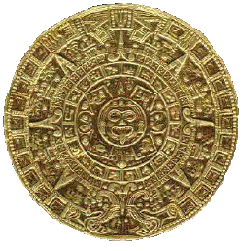
Cultural Arts Center
Van Horn, Texas
|
Few people in West Texas are aware that many Mexicans, including Mexican-Americans born in this great state, were told to leave Texas during the Great Depression and go back to Mexico. President Hoover publicly blamed Mexican workers for part of the Southwest's economic problems. U.S. officials turned to deportation - the forced removal of people from the country. From California to Arizona to Texas, states began forcibly returning Mexicans across the border. Authorities insisted they merely were ridding the nation of illegal immigrants. However, many of those Mexicans forced from the country were U. S. citizens. The drama presented in La Victima was not understood by many people because they are not aware that this actually happened. Some who were the victims of this very unjust edict understood very well. Quinto Sol's presentation of La Victima evoked disturbing memories for countless Van Horn citizens. Sammy awakens shouting, "Mamá, Mamá, ¡No me dejes! ¡No me dejes! You don't have to understand the language being spoken to understand the anguish and the agony Sammy is suffering. Such is the power of drama. People understand the power of love and the emotions evoked by its denial. Such is the case with La Victima, a play staged by Quinto Sol May 10, and repeated on May 14 at the Van Horn High School auditorium. Although the play was performed almost entirely in Spanish, people who attended were pleasantly surprised and very receptive to its performance. "I did not understand it in its entirety, but the acting was admirable," commented one of many spectators who totally concurred. The script was collaboratively written in 1976 by members of Santa Barbara Teatro de la Esperanza, and has been presented in many places throughout the United States. Van Horn was very fortunate to have had a member of its community in the person of teacher, actor, and director José Antonio Velázquez to piece together and direct the volunteer Quinto Sol cast and crew to stage the production. La Victima projects a touching image of the suffering endured by many Mexican immigrant families during the depression. Focusing on one family, La Víctima effectively shows how California's ever-changing immigration policy shaped Mexican-American society. Before Sammy is accidentally separated from his parents, who are being deported from L.A., we are told that in 1932, Herbert Hoover made a pledge to rid the country of Mexicans, resulting in thousands of such fractured families. In Scene Three we see the futility of a family trying to make ends meet. Julián, played by José Velázquez, comes home to announce he's been laid off, and going back to Mexico was imperative. Amparo, played by Imelda Sánchez, will hear none of it. After a heart rending scene she is finally convinced there is no alternative. Jason Wallace commendably plays Sammy, the son who was separated from his family during the deportations. He grows up to become an INS border guard and tries to reassure himself he has assimilated. He pressures himself to believe he is "just doing his job" sending illegals back across la frontera. By the end of the play he pays the price for closing the doors of his heart to whom he truly is, and is overwhelmed by self-doubt and self-loathing. Imelda Sánchez superbly plays the character of Amparo Villa, Sammy's long-separated mother. Amparo's main concern is keeping her family together, which leads her to re-enter California illegally to be with her other two children, who are legal citizens. In every scene Imelda commendably plays her character with an impressive inner strength.
La Víctima delivers some very touchy subjects which are tempered by light comedy and genuine tenderness. Director José Antonio Velázquez surpassed expectations spending many, many hours fitting all the pieces of the puzzle together before going on stage. The cast and the crew performed energetically, gratuitously, and most importantly, from the heart to give the production quality so it would transmit its message regardless of language. The people who were gracious enough to attend were left with a sense of awe. All that can be heard now is, ¡Más, queremos más! |
